Sharing nearly 98% of our DNA, gorillas are more than just our enormous, hairy cousins. These gentle giants hold the title of the largest primate on Earth, but their strength is equally as fascinating as their calm and kind disposition.
Gorillas build elaborate nests each night, communicate with a complex language of vocalizations, and live in tight-knit social groups led by a silverback - and much more. The feeling of seeing the young gorillas interact with each other while the older ones play parent is more than any words can describe.
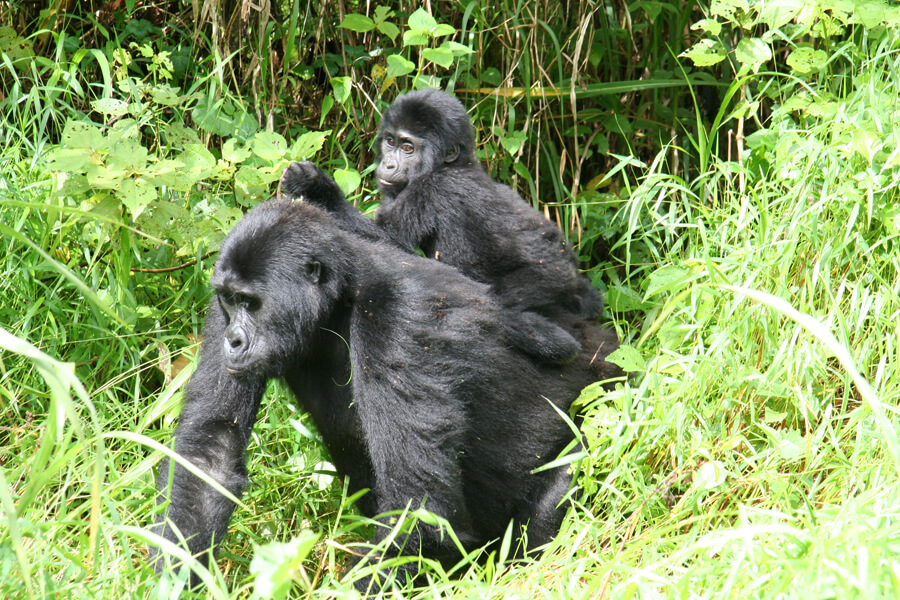
In this article, we'll look at some very interesting facts about gorillas. We'll dig deeper and discover the fascinating world of gorillas, where intelligence, strength, and gentle nature harmonize into perfection.
Interesting Facts About Gorillas
1. How Many Kinds Of Gorillas Exist?
There are 2 species of gorillas, the western gorillas and the eastern gorillas. Each of the species is divided into 2 subspecies, and thus there are 4 kinds of gorillas.
- Eastern gorillas (Eastern Lowland Gorillas, and Mountain Gorillas) live in DR. Congo, Rwanda and Uganda.
- Western gorillas ( Western Lowland Gorillas, and Cross River Gorillas) live in DR. Congo, Congo, Gabon, Central African Republic and Cameroon.
Besides the geography, an easier way to distinguish the 2 gorilla species is the amount of hair on their skin. Eastern gorillas have longer and thicker fur when compared to western gorillas.
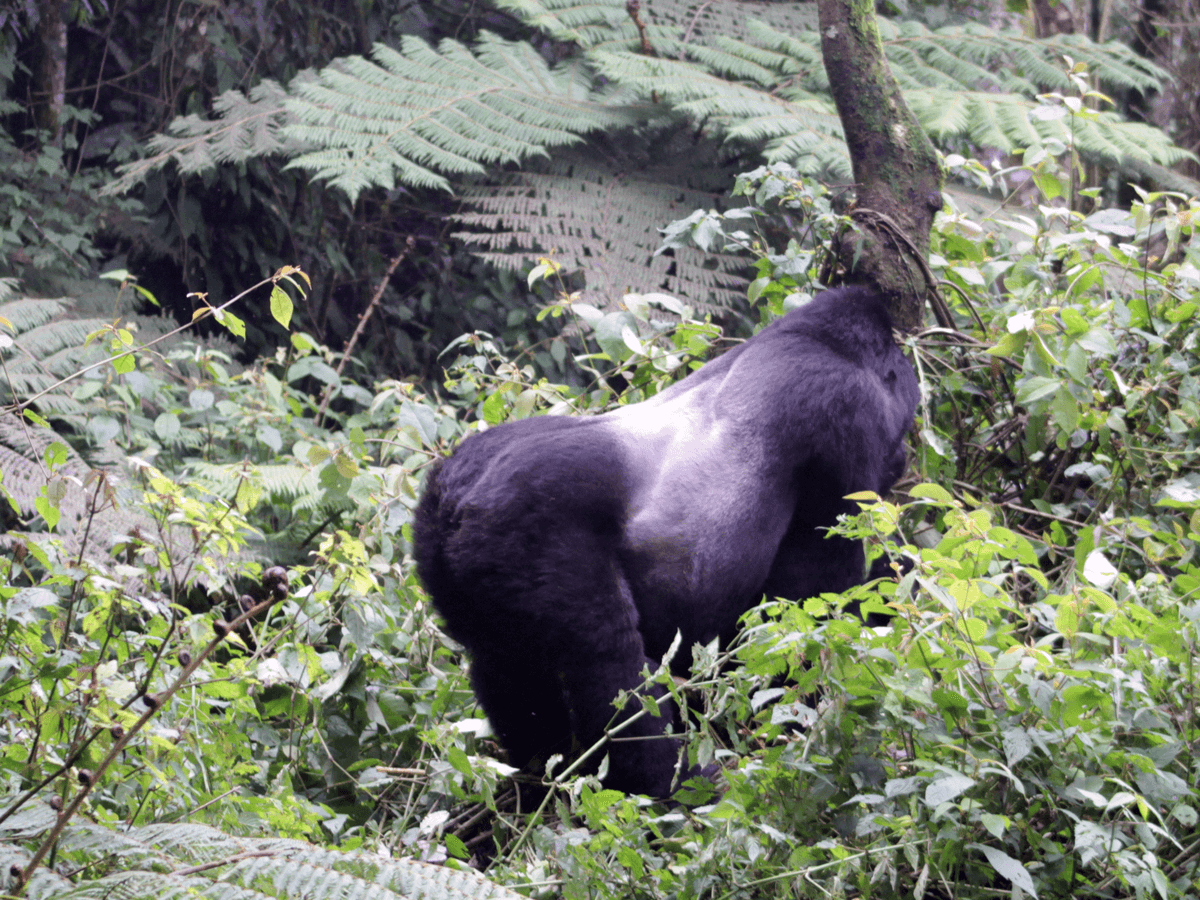
2. How Big Are Gorillas?
Gorillas are the biggest primates with adult silverbacks weighing up to 500 pounds (225 kilograms). Generally, Male gorillas are bigger than the females in size and weight.
An adult male gorilla can weigh between 300 and 500 pounds (136 to 227 kilograms) while the females will typically weigh around half at 150 to 250 pounds (71 to 113 kilograms).
Height-wise, adult gorillas stand between 4 feet 7 inches and 5 feet 11 inches ( 1.4 - 1.8 meters ) in height. For context, this is around the same height for the biggest percentage of humans.
In terms of arm span, gorillas have longer arms and their arms can stretch up to 8.5 feet (2.6 meters).
Here is the summary comparison of the gorilla's size, and weight.
| Adult Male Gorilla | Adult Female Gorillas | |
|---|---|---|
| Weight | 300 - 500 lb (136 - 227 kg) | 150 - 250 lb (68 - 113 kg) |
| Height | 4ft 7in - 5ft 11in (1.4 - 1.8m) | 4ft 1in - 4ft 11in (1.25 - 1.5m) |
| Arm span | 7ft 7in - 8ft 6in (2.3 - 2.6 m) |
3. What Do Gorillas Eat?
Gorillas survive on a vegetarian diet of mostly leaves, stems, shoots, piths, stems, barks, and fruits. The exact food varies depending on the location as well as the season, especially for fruits and young bamboo.
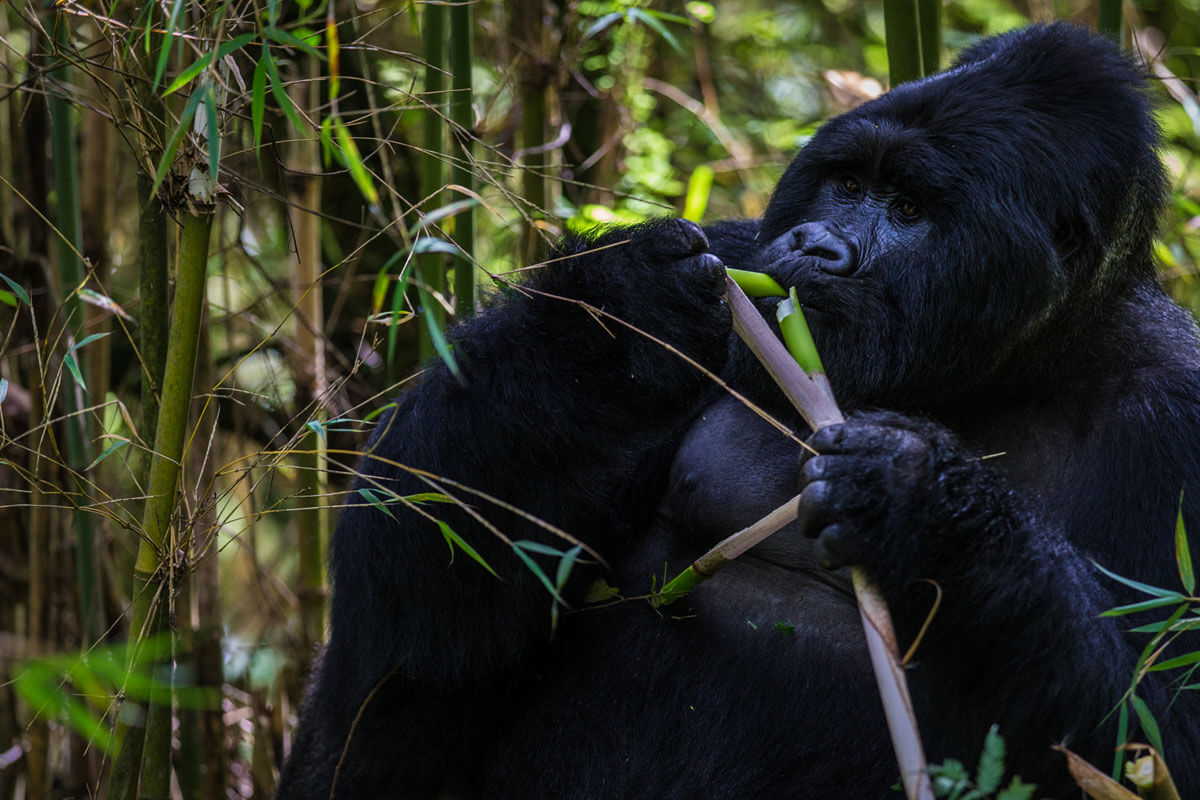
Gorillas can also eat ants and termites but this doesn't even make up 4% of their diet and this serves as a source of sodium and other minerals.
Related article: What do gorillas eat?
4. Gorillas Bite Harder Than A Lion
For vegetarians, gorillas have a strong bite force and can bite harder than a lion. They have a bite force of 1300 PSI (pounds per square inch), which is more than 6 times that of a human.
Since they have to eat bark and piths as well as some bamboo, gorillas have physically adapted to have a strong bite.
5. What Do Gorillas Do All Day?
Gorillas spend their day either eating or resting. Gorillas can eat for about a quarter of their whole day and the rest is spent moving to look for food or resting.
Gorillas normally feed more during the mornings and evenings but can keep eating, like a sort of snacking throughout the day until it is time to fill up before the night.
When they are resting, the adults will sit and calmly watch the young gorillas play with each other.
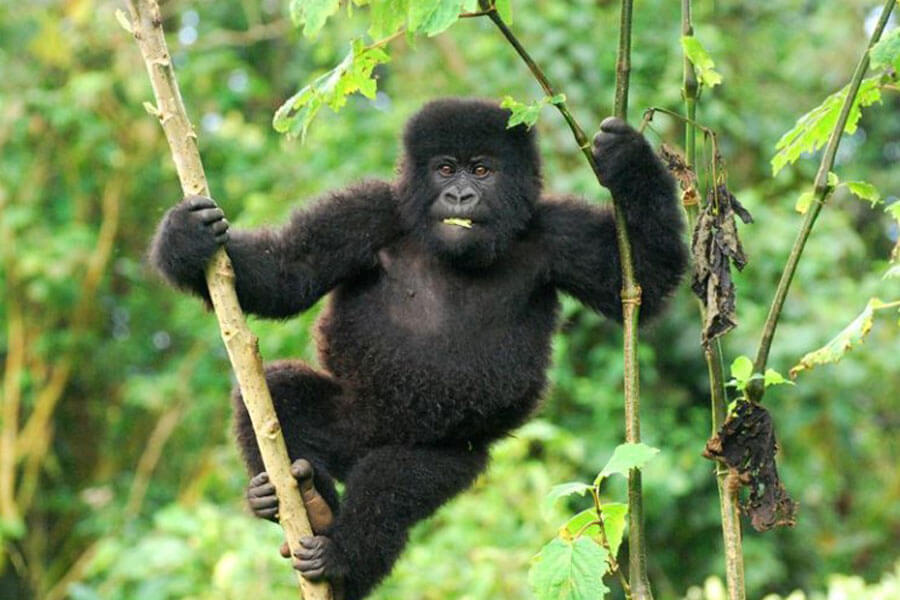
6. Are Gorillas Good At Climbing?
Gorillas are very capable climbers but spend less time in the trees and more time on the ground. This is unlike our other cousins, the chimps and orangutans.
Because they are big and heavy, gorillas would risk falling and injury and thus do not climb very often. Infant and juvenile gorillas will be seen climbing trees more often because they are quite light and small but gorillas of all ages are good at climbing.
7. Are Gorillas Aggressive?
Even though gorillas in movies are sometimes portrayed as dangerous creatures, they are very calm and gentle. There is a reason why most people who have been around them refer to gorillas as gentle giants.
On a gorilla trekking trip, you are usually accompanied by a ranger who ensures that you keep some social distance from the gorillas, but if they come towards you, the general rule is to stay calm and in one place.
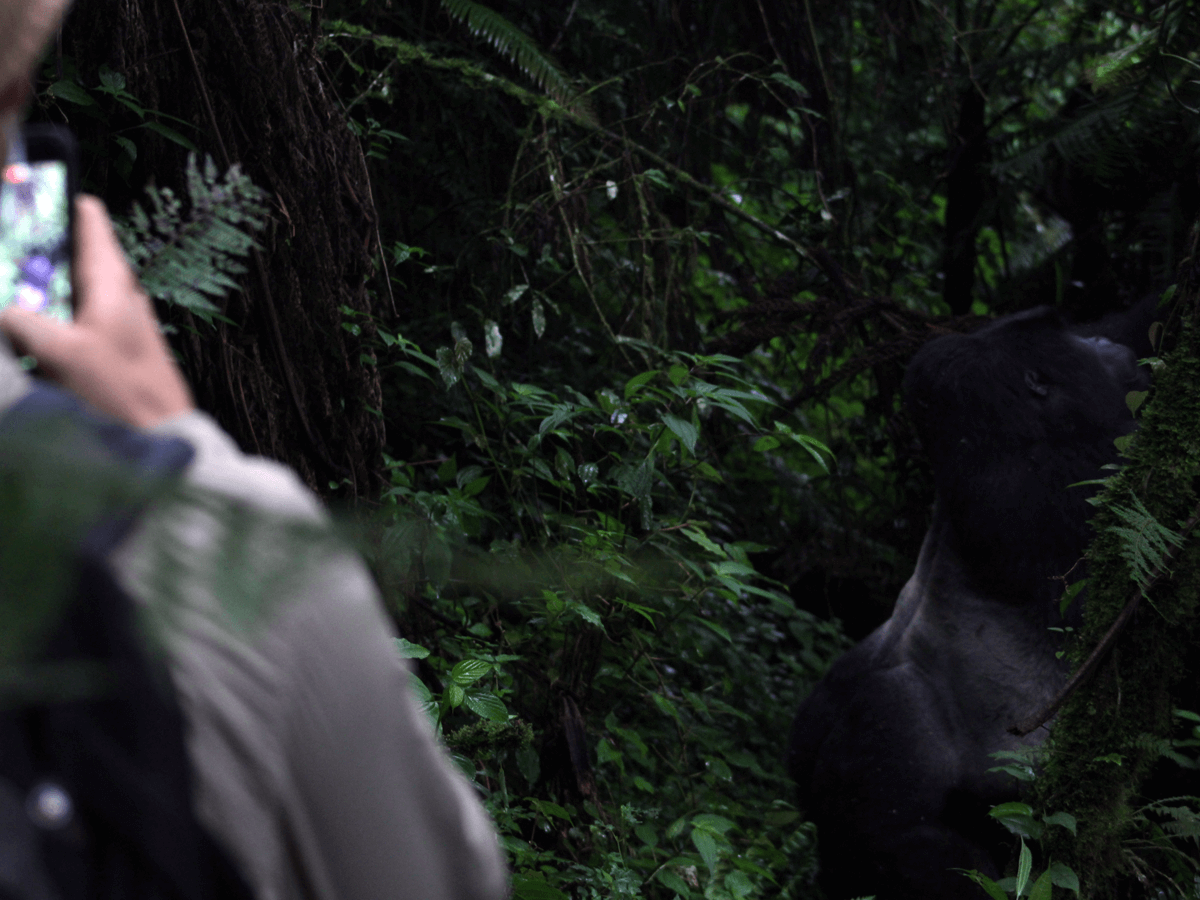
Young gorillas are the ones who can at times try playing with visitors. Even looking into a gorilla's eyes, you will not feel threatened in any way but rather connected.
That being said, they are still wild animals and the rangers are usually armed to be able to disperse them in case of emergencies.
8. Are Gorillas Social?
Gorillas live in family groups called troops. The group is often made up of one silverback and several adult females along with their young ones.
Gorillas are very very social animals with strong group cohesion among all the family members.
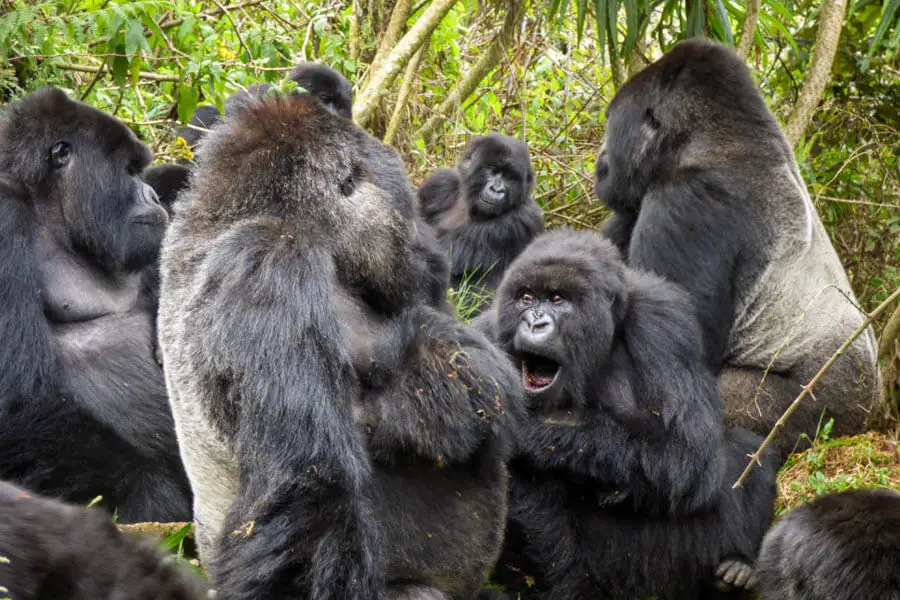
9. How Do Gorillas Communicate?
Gorillas communicate with each other using various methods that are vocal and non-vocal. There are 25 recognized distinct vocalizations that gorillas use among which are grunts, barks, screams, roars, and belches.
Chest thumping is used to intimidate intruders.
10. How Do Gorillas Sleep?
Gorillas make fresh nests for daytime and night use. The sleeping nests are made of branches and shrubs and are only used one time.
Each gorilla except for the young infants builds its own sleeping nest. Infants share a sleeping nest with their mothers for protection and warmth. Sometimes the sleeping nests are built in a tree but gorillas often build and sleep on the ground, unlike chimps and orangutans.
Related article: Sleeping habits and patterns of gorillas
11. Every Group Has A Dominant Silverback
Every troop (gorilla family) has one dominant silverback that is responsible for protecting the group and looking for feeding spots. The dominant silverback has the mating rights to all the females and will fight off any invading silverback.
Some groups will have more than one silverback but their hierarchy will still exist and the leader of the troop will be respected by the other silverbacks. The roles of mating, protection and finding food remain to the dominant silverback.
12. Gorilla Pregnancy Is 8.5 Months
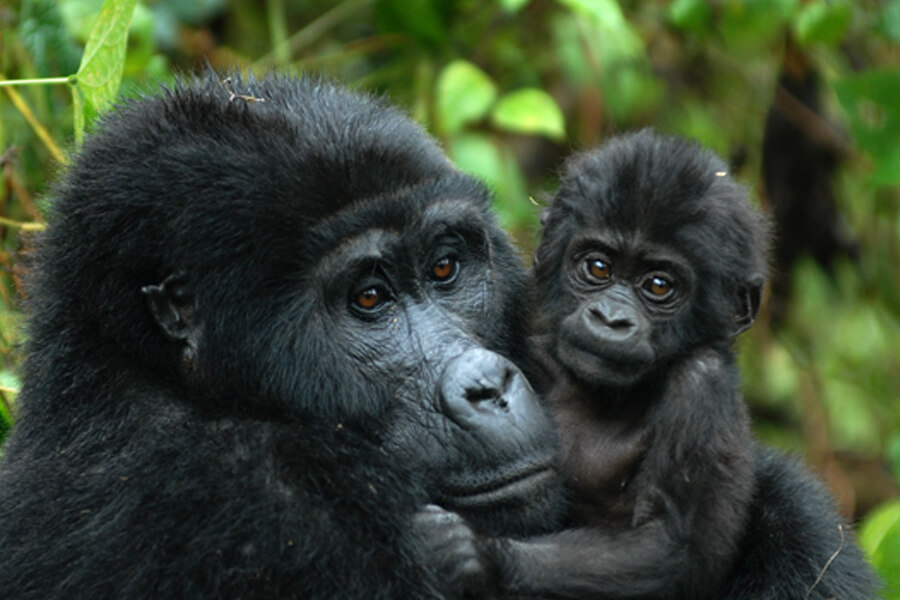
Gorillas give birth after a pregnancy of 8.5 months and often to 1 baby every 4 to 6 years. The mother takes care of the newborn infant for around 3 years until it is old enough to walk and feed on its own.
Infant gorillas grow at twice the rate of human babies.
13. Subadult Gorillas Are Cast Out Of The Family.
Gorillas become old enough to start mating at around 9 years. Females reach sexual maturity earlier than males at 9 years and males reach their sexual maturity at 10 years.
Both males and females are cast out of the family group when they are old enough to mate to prevent inbreeding with the females and to ensure that the dominant silverback retains his exclusive mating rights over all the females.
The young females go and join the family of another silverback, or start a new family with other young silverbacks that are also looking to establish a new group.
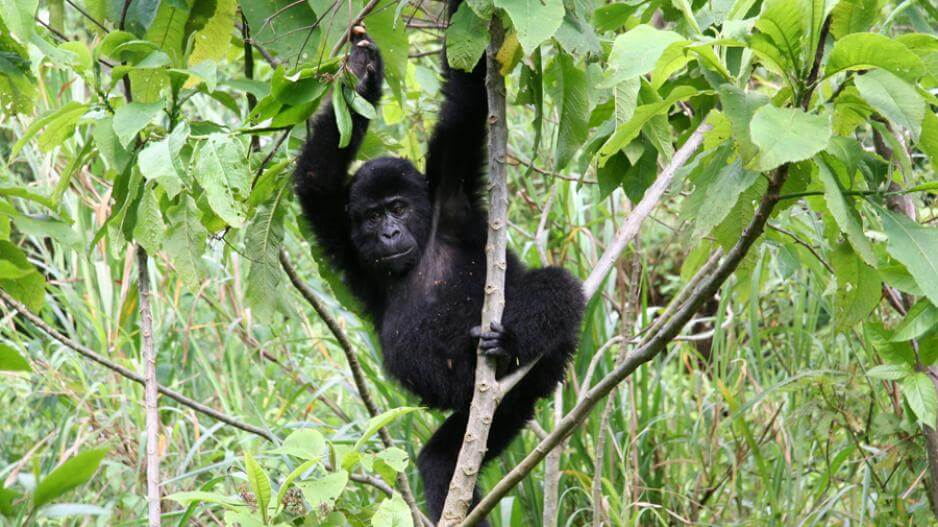
14. Gorillas Are Related To Humans
Gorillas are our closest animal cousins after chimpanzees and bonobos. We share around 98% of DNA and it is believed that we diverged from a common ancestor some 7 million years ago.
Besides the DNA evidence, the complex social structures of gorillas show a high level of intelligence.
If you were to accurately depict and articulate the interactions you observe with gorillas, your portrayal could be easily confused with human behaviour - only differing in the specifics related to them being gorillas.
15. Gorillas Have Unique Fingerprints & Nose Patterns
Gorillas, like humans, have unique fingerprints. This simply shows how closely related we are as animals.
While you won't be able to take a look at the fingerprints of various gorillas easily, gorillas have unique nose patterns that can be used for identification.
The nose pattern (nose print) of each gorilla is unique and you can easily tell similarly sized individuals apart by their nose pattern.
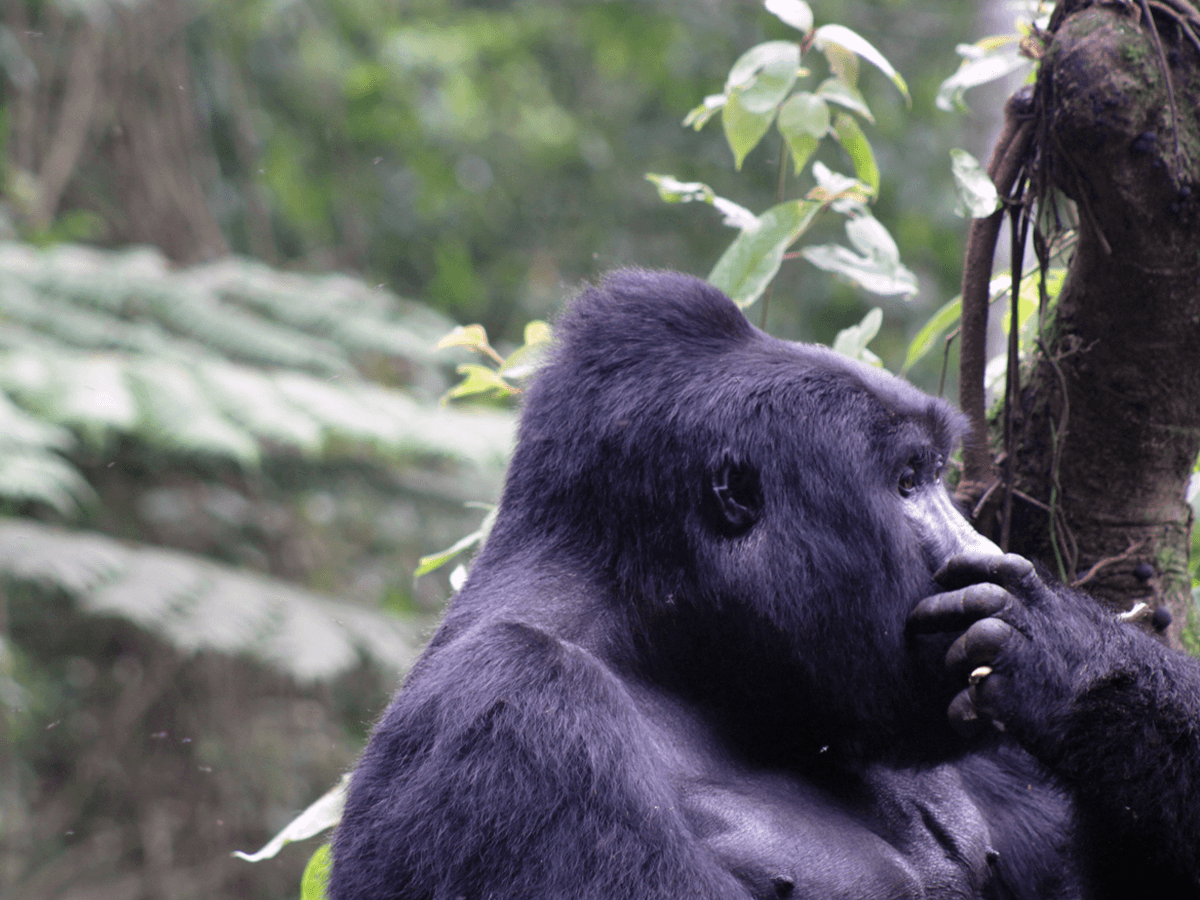
16. Gorillas Are Very Smart
Gorillas are highly intelligent animals that can learn sign language, use tools, display emotion, and show compassion. Koko the gorilla (in San Francisco Zoo) was able to learn sign language and had a working vocabulary of more than 1000 words.
Gorillas have been noted to form strong family bonds as well as get very familiar and safe with humans, especially the guides and researchers they are used to.
17. Where Can I See Gorillas In The Wild?
All the gorilla species can be seen in the wild. They however don't share a common habitat, and so to see any given kind of gorilla, you will need to visit a specific area.
Most safari trips and tours for seeing gorillas are for mountain gorillas in Uganda, Rwanda, and D.R.Congo. In DRC, You can be able to see both the Eastern lowland gorillas and the mountain gorillas.
Gorilla tours in Uganda and Rwanda are more popular with travellers because they have good safety records and well-developed tourism infrastructures. Take a look at our article on the safest African countries to visit.
| # | GORILLA SUBSPECIES | WILD HABITAT |
|---|---|---|
| 1 | Mountain Gorillas | Uganda, Rwanda, D.R.Congo |
| 2 | Eastern lowland gorillas | D.R.Congo |
| 3 | Western Lowland Gorillas | Angola, Cameroon, Central African Republic, Congo (Brazzaville), DR Congo, Gabon, Equatorial Guinea |
| 4 | Cross River gorillas | Cameroon-Nigeria Border area |
17. Mountain Gorillas Can't Live In A Zoo
While you might have seen gorillas in a nearby zoo, those are not mountain gorillas. Western gorillas and Eastern lowland gorillas are capable of surviving in captive environments but mountain gorillas only live in their natural habitat.
Attempts to keep them in captive environments have all failed. Therefore, if you have to see mountain gorillas, they are only found in their natural jungle homes in Uganda, Rwanda, and DRC, nowhere else.
Related article: Where to see mountain gorillas in the wild
18. Can Gorillas Catch Covid?
Gorillas are our close cousins and this closeness means that they can catch most human diseases. Like chimps, gorillas can easily catch and spread communicable diseases.
Gorillas can catch diseases such as flu, cough, ebola, and other communicable diseases that humans can spread to each other through contact. This means that gorillas can also catch coronavirus (COVID-19) as well.
This is why when you go to see gorillas (or chimps) in the wild, you are asked to keep a distance from the animals and wear a face mask. This is to protect them since diseases like COVID-19 can easily wipe out the entire population of gorillas in a forest.
Related article: Rules to keep in mind for gorilla tracking
19. Are Gorillas In Danger?
The main threat to the existence of gorillas is the degradation of their habitat. These natural gorilla habitats are surrounded by human settlements with populations and a mounting need for agricultural land.
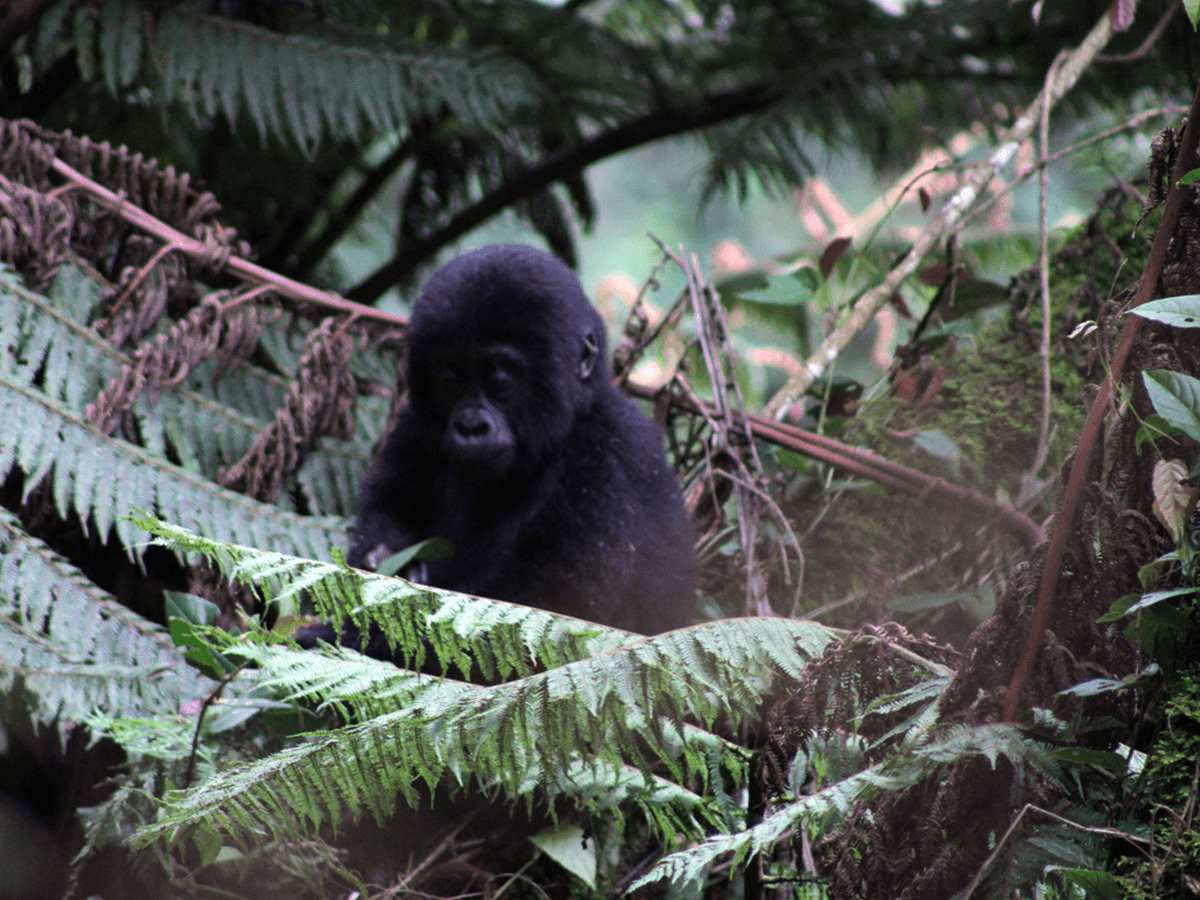
This proximity makes it hard to protect the gorillas from contact with people, which could easily lead to disease outbreaks.
Given those gorillas only live in specific areas, these human-wildlife relations make conservation a balancing act of several challenges and fears.
20. How Many Gorillas Are Left In The Wild?
According to the International Union for the Conservation of Nature (IUCN), all 4 subspecies of gorillas are regarded as endangered or critically endangered.
The table shows the estimated number of wild gorillas (all subspecies) left.
| # | GORILLAS | POPULATION IN THE WILD | CONSERVATION STATUS | PRESENT IN ZOO |
|---|---|---|---|---|
| 1 | Cross River Gorillas | Between 250 and 300 | Critically Endangered | Yes |
| 2 | Western Lowlwand gorillas | Around 95,000 | Critically Endangered | Yes |
| 3 | Eastern Lowland Gorillas | Around 3,800 | Critically Endangered | Yes |
| 4 | Mountain Gorillas | Just over 1,000 | Endangered | No |
While mountain gorillas do not exist in any zoos, conservation efforts have seen their populations slowly but steadily increase in recent years.
Cross River gorillas are the ones with the smallest numbers in the wild, with not more than 300 individuals.
21. How Long Do Gorillas Live?
Gorillas can live up to 40 years in the wild and closer to 50 years in captivity. Gorillas mostly die of disease, accidents, natural causes, and sometimes traps set by poachers for other animals.
Related article: Life span of African animals in the wild
22. Does Tourism Help Gorillas?
One way gorilla conservation has been supported is through tourism. Proceeds from tourism are often shared with local communities and used to develop the area and transform the rural economy beyond subsistence agriculture and forest exploitation.
The economic incentive to conserve these jungles where gorillas live has led to more involvement by local communities in the conservation projects.
Final Thoughts
Maybe it is the close relationship gorillas have with humans, but learning about gorillas is very interesting. There is plenty of research and it is very easy to find yourself geeking out.
While learning about gorillas is exciting, it doesn't compare to seeing them in person and looking into those friendly yet sad eyes. And given their personalities, seeing gorillas is different each time, especially in the wild jungle because the hike to see the changes every day.
All in all, we hope this article has inspired you to learn more about gorillas, and when possible go on a gorilla safari to meet the gentle giants. We have some more articles about gorillas for you to continue with.
